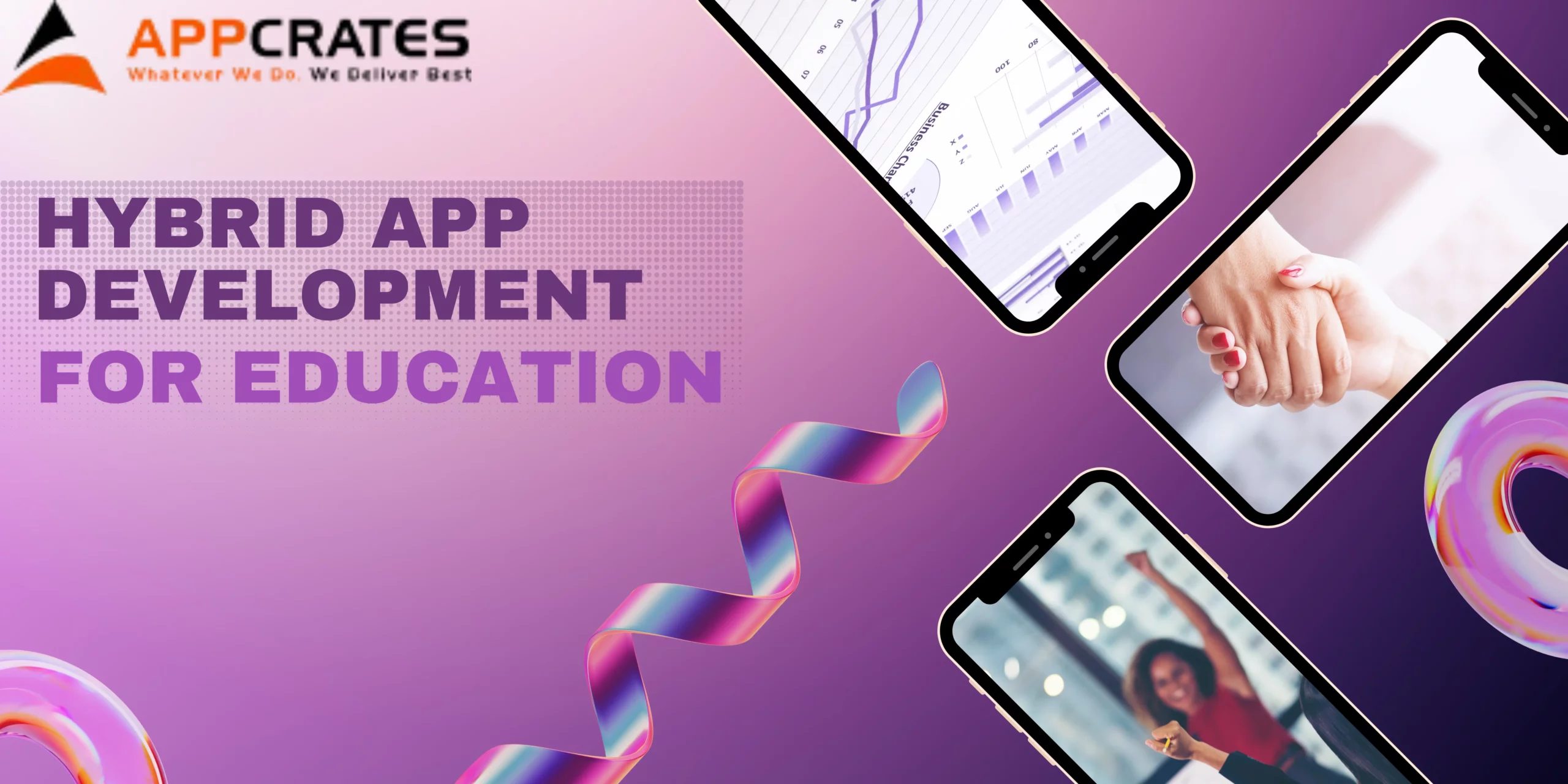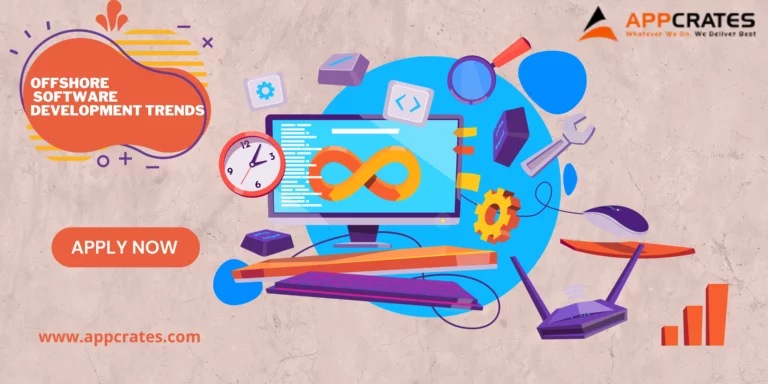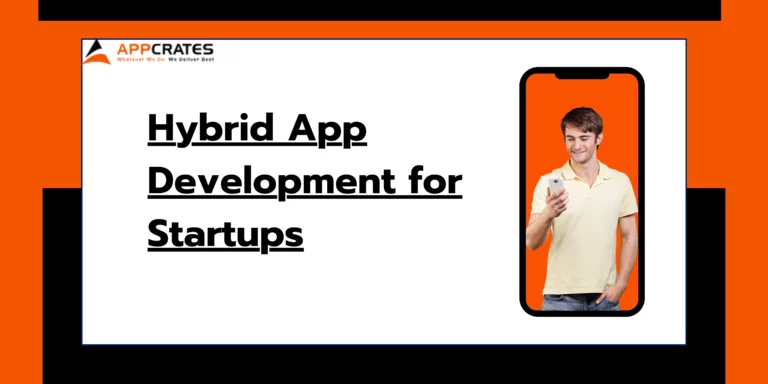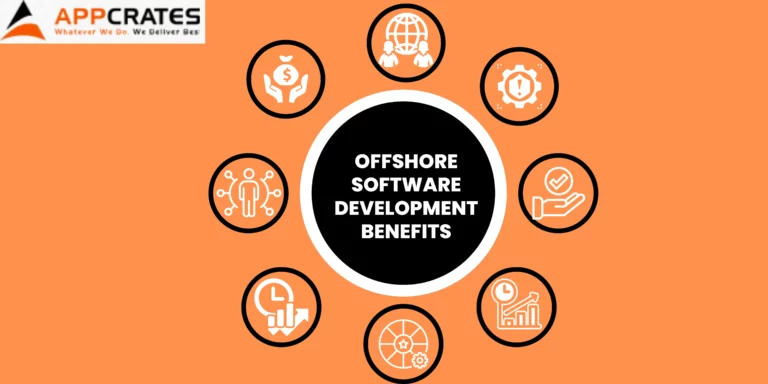Hybrid app development for education
Introduction:
Hybrid app development for education has become a game-changer in today’s digital age, as educational institutions are increasingly embracing technology to enhance the learning experience. One powerful tool that has revolutionized the education sector is mobile applications. Mobile apps provide students with convenient access to educational resources, interactive learning modules, and personalized study materials. When it comes to app development, one approach that stands out is hybrid app development.
Hybrid app development combines the best of both worlds by leveraging web technologies and native app components. It offers a cost-effective solution to develop cross-platform apps that can run seamlessly on multiple devices and operating systems. In this comprehensive guide, we will explore the intricacies of hybrid app development for education and provide insights into its benefits, creation process, technologies used, and more.
What is Hybrid in App Development?
Hybrid app development refers to the approach of creating mobile applications that combine elements of both web and native app development. These apps are built using web technologies such as HTML5, CSS3, and JavaScript, which are encapsulated within a native app wrapper. This wrapper allows the app to be distributed through app stores and installed on users’ devices, just like native apps.
The key advantage of hybrid apps lies in their ability to leverage web technologies while still having access to native features and device capabilities. This makes hybrid app development an ideal choice for educational institutions looking to reach a wider audience across different platforms without the need to develop separate native apps for each platform.
How Do You Make an Educational App?
Creating an educational app requires careful planning, development, and implementation to ensure its effectiveness and usability. Here are the key steps involved in making an educational app:
Ideation and Planning
The first step in creating an educational app is to define its purpose and target audience. Conduct thorough research to understand the needs of students, teachers, and educational institutions. Identify the core features and functionalities that your app should offer, such as interactive lessons, quizzes, progress tracking, and collaboration tools.
Once you have a clear vision for your app, create a detailed plan that outlines the app’s structure, content, user interface, and development timeline. Consider user experience (UX) design principles and ensure that the app aligns with educational objectives and standards.
Design and User Interface
The design of your educational app plays a crucial role in engaging users and facilitating effective learning experiences. Focus on creating an intuitive and visually appealing user interface (UI) that enhances usability and encourages interaction. Consider incorporating gamification elements, such as badges or rewards, to motivate students and make the learning process more enjoyable.
Collaborate with designers and UX experts to create wireframes and prototypes that reflect the app’s functionality and user flow. Prioritize simplicity and ensure that the design elements support the educational content rather than overpowering it.
Development
The development phase involves translating your app’s design and functionality into a working prototype. In hybrid app development, frameworks like Apache Cordova, React Native, or Xamarin come into play. These frameworks provide a bridge between web technologies and native app components, allowing you to access device features such as camera, GPS, or push notifications.
Leverage the power of HTML, CSS, and JavaScript to develop the app’s user interface and implement interactive features. Ensure that the app is responsive and compatible with different screen sizes and orientations. Test the app’s functionality rigorously to identify and fix any bugs or glitches.
Testing and Debugging
Thoroughly test your educational app across various devices and platforms to ensure its compatibility and performance. Perform functional testing to verify that all features work as intended. Additionally, conduct usability testing to gather feedback from potential users and make necessary improvements to enhance the app’s overall user experience.
Deployment and Distribution
Once your educational app has undergone sufficient testing and debugging, it is ready for deployment. Package the app into platform-specific formats, such as APK for Android or IPA for iOS, depending on the target platforms. Upload the app to the respective app stores, such as Google Play Store or Apple App Store, and follow their submission guidelines for publication. Provide clear and concise app descriptions, screenshots, and relevant keywords to enhance discoverability.
For further information on best practices for hybrid app development, you can refer to the article Best Practices for hybrid app development on AppCrates. Additionally, to stay updated with the latest hybrid app development trends, you can explore the article Hybrid App Development Trends on AppCrates.
In the next sections of this article, we will delve into the specific technologies used in hybrid app development and discuss the three types of mobile applications in detail.
Technologies Used to Build Hybrid Apps
Hybrid app development relies on a variety of technologies and frameworks that enable the creation of cross-platform apps. Here are some commonly used technologies:
HTML5, CSS3, and JavaScript
HTML5 provides the structure and semantic markup for the app’s content, CSS3 is responsible for styling and layout, and JavaScript adds interactivity and dynamic functionality. These web technologies form the foundation of hybrid app development and are utilized to create the app’s user interface.
Hybrid App Development Frameworks
Frameworks like Ionic, React Native, or Xamarin offer a range of pre-built UI components, plugins, and tools to streamline the hybrid app development process. These frameworks allow developers to write a single codebase that can be deployed across multiple platforms, saving time and effort.
Apache Cordova (PhoneGap)
Apache Cordova, commonly known as PhoneGap, acts as a bridge between web technologies and native device features. It provides a set of JavaScript APIs that allow developers to access device functionalities like camera, contacts, or geolocation.
Firebase
Firebase, a mobile and web development platform, offers a suite of services that can be integrated into hybrid apps. These services include real-time databases, cloud storage, authentication, and push notifications, among others. Firebase simplifies the development process and enhances the app’s functionality.
These technologies provide a solid foundation for developing hybrid apps for educational purposes. Leveraging their capabilities allows developers to create feature-rich, cross-platform applications that deliver a seamless learning experience.
The Three Types of Mobile Applications
When it comes to mobile applications, there are primarily three types: native apps, web apps, and hybrid apps. Let’s explore each of them in more detail:
Native Apps
Native apps are specifically built for a particular platform, such as iOS or Android, using platform-specific programming languages like Swift or Kotlin. These apps have access to all the native features and capabilities of the device, providing optimal performance and user experience. However, developing separate native apps for multiple platforms can be time-consuming and costly.
Web Apps
Web apps are essentially websites that are designed to be accessed and used on mobile devices. They are developed using web technologies like HTML, CSS, and JavaScript and can be accessed through a web browser. Web apps are platform-independent and do not require installation from app stores. However, they lack access to certain native device features and may have limitations in terms of offline capabilities and performance.
Hybrid Apps
Hybrid apps combine the best of both native and web app development. They are built using web technologies but are encapsulated within a native app wrapper, allowing them to be distributed and installed on users’ devices. Hybrid apps offer cross-platform compatibility, access to native features, and the ability to provide an app-like experience. They are cost-effective and efficient solutions, particularly for educational institutions looking to reach a broader audience across multiple platforms.
Understanding the different types of mobile applications helps in making informed decisions about the most suitable approach for developing educational apps.
In the upcoming sections of this guide, we will explore the best practices for hybrid app development for education and discuss the current trends in the field. Stay tuned for more valuable insights!
Best Practices for Hybrid App Development for Education
When developing hybrid apps for education, it’s essential to follow best practices to ensure a seamless user experience and optimal performance. Here are some key practices to consider:
Responsive Design
Design your educational app with responsiveness in mind. Ensure that the app’s user interface adapts and scales appropriately across different screen sizes and orientations. This guarantees that users can access and navigate the app comfortably on various devices, including smartphones and tablets.
Performance Optimization
Optimize the performance of your hybrid app to provide a smooth and responsive experience for users. Minimize loading times by optimizing images and other media assets. Implement lazy loading techniques to load content progressively and improve initial app load times. Regularly test and profile your app to identify and address any performance bottlenecks.
Offline Capabilities
Integrate offline capabilities into your educational app to enable users to access content and resources even without an internet connection. Implement local data caching and synchronization mechanisms to ensure seamless offline usage. This is particularly crucial for educational apps, as students may need to access course materials or study resources in offline environments.
Usability and Accessibility
Prioritize usability and accessibility in your app design. Create an intuitive and user-friendly interface that allows users to navigate the app effortlessly. Ensure that the app meets accessibility standards, making it accessible to users with disabilities. Consider incorporating features such as text-to-speech capabilities or high contrast modes to enhance accessibility.
Security and Privacy
Implement robust security measures to protect sensitive user data and ensure user privacy. Encrypt data transmission and storage to safeguard personal information. Follow best practices for user authentication and authorization to prevent unauthorized access to user accounts. Regularly update and patch security vulnerabilities to keep the app secure.
Continuous Testing and Updates
Regularly test your educational app across different devices, operating systems, and screen sizes to identify and fix any bugs or issues. Implement an agile development approach and release frequent updates to address user feedback, add new features, and improve app performance. Continuously monitor and analyze user behavior and feedback to make data-driven improvements.
For a more detailed exploration of best practices in hybrid app development, you can refer to the article Best Practices for hybrid app development
Current Trends in Hybrid App Development for Education
The field of hybrid app development for education is constantly evolving, with new trends and technologies emerging. Here are some current trends worth considering:
Progressive Web Apps (PWAs)
Progressive Web Apps (PWAs) combine the best aspects of web and native app development. PWAs provide an app-like experience through a web browser, offering offline capabilities, push notifications, and home screen installation. They eliminate the need for app store distribution while providing a consistent user experience across different platforms.
Artificial Intelligence (AI) Integration
Integrating artificial intelligence technologies into educational apps can enhance personalized learning experiences. AI can be utilized for intelligent content recommendation, adaptive learning, automated assessment, and virtual tutoring. By analyzing user behavior and performance, AI algorithms can provide tailored recommendations and support to individual learners.
Augmented Reality (AR) and Virtual Reality (VR)
AR and VR technologies offer immersive learning experiences that can greatly benefit educational apps. AR can overlay virtual content onto the real world, allowing students to interact with virtual objects and environments. VR creates fully immersive virtual environments, enabling students to explore and engage with subjects in a simulated setting. These technologies can bring complex concepts to life and make learning more interactive and engaging.
To stay updated with the latest hybrid app development trends in education, you can explore the article Hybrid App Development Trends
Conclusion
Hybrid app development provides a powerful solution for creating educational apps that can reach a wider audience across multiple platforms. By leveraging web technologies and native app components, hybrid apps offer the benefits of cross-platform compatibility, access to device features, and cost-effective development.
In this article, we have explored the concept of hybrid app development, the process of creating educational apps, the technologies used, and the three types of mobile applications. We have also discussed best practices for hybrid app development and current trends in the field.
Developing a successful educational app requires careful planning, adherence to best practices, and an understanding of emerging trends. By embracing hybrid app development and incorporating the latest technologies, educational institutions can enhance the learning experience and provide students with powerful tools for their educational journey.
For more insights into the education app development process, technologies, and strategies, you can refer to the article “Education App Development: Process, Technologies, and Strategies to Create an Educational App” on eLearningIndustry.
Remember, the world of hybrid app development is dynamic and constantly evolving. Stay curious, stay updated, and continue exploring new possibilities to create impactful educational apps.








